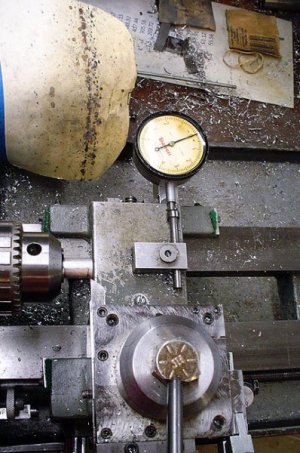Actually,I don't even understand the need to have an indicator against the work. I have never done it,and I know it would be VERY,VERY hard on the delicate mechanizmo,and would wear the tip,too.
I just measure the diameter with a dial caliper,or with a mike if it is more critical,like everyone usually does.
How many thousands of times does the internal mechanism move on just one smallish job when the indicator is in contact with rotating work? A sure way to quickly ruin it. Maybe I am misunderstanding what you are using the indicator for.
If the tool shown in the picture is being used to turn a cylinder,it has much too acute a tip. The tip needs to have a SMALL,rounded end on it that more than spans the width of the feed of the cut,if it is to produce a smooth finish. A tip that acute can make a fuzzy surface,from which you will never get an accurate diameter reading.
The only time I use a tip that acute is when I need it to make a sharp corner on the work. For fine detailing,in other words.
I see the bed of your lathe has flat ways. If that is an Atlas or Sears lathe,they are so flexible that they will lie to you all the time!! SHARP TOOLS ARE ESSENTIAL ON FLEXIBLE,LIGHTLY BUILT LATHES. I KNOW,having suffered for a year with a 12" brand NEW Sears Atlas for a year. Then,I discovered the new Taiwan imports (and had more money to spend!) and got a 10" Jet. What a huge difference it made. I wish I still had it,as it would cut many more thread sizes than my Hardinge HLVH,which cuts 27. I can fall back on my 16" lathe if need be,but the HLVH is so pleasant to use,I just wish it had a greater thread range. I must confess,however, that thus far,over 2 decades with it,I haven't actually needed a thread outside its range. I'm just a nut who wants to be ready for ANY eventually! Sometimes they never materialize.


